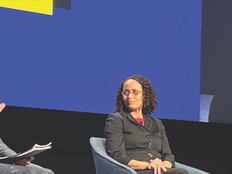CIO as Change Agent: Choose Your Role Wisely
CIOs have an opportunity to be prime movers in helping their agencies better carry out their missions.
The role of the CIO as a change agent can be as a leader, driver of change, knowledgeable coach or facilitator. Which of these the CIO chooses will hinge on the type of change at hand.
The CIO brings a unique perspective to change management within an agency because of his or her knowledge of IT and IT management, including how technology can be used to support change.
Change can be initiated by:
- shifting agency goals and priorities, as perceived by its leadership;
- shifting external mandates, such as the need for more-open government;
- changing IT capabilities or vendor offerings, including availability of new technologies.
Shifting Agency Goals and Priorities
Perceiving shifting visions of agency leaders requires CIOs to keep their ears open for both explicit and implicit indications of new priorities that could benefit from innovative use of IT. CIOs need to go out of their way to be sensitive to this type of change. New leaders near the top of an agency need to be listened to especially closely.
This listening process is easier if the CIO is already knowledgeable about the organization and its mission. The CIO needs to remember that he or she is not running the organization and is usually not in a position to drive changes in agency priorities. Rather, the CIO needs to anticipate changes and look for ways to be responsive with IT to support these changes.
Agency leaders may know what they want to do, but not how to do it — especially for changes that require innovative IT. They don't always know what is possible or what is very difficult to do. The CIO can be a hero by suggesting ways to move quickly and efficiently to implement new priorities, including re-engineering of agency business processes before introducing new IT to support the updated processes.
Shifting External Mandates
Sensing shifting external mandates also requires that the CIO listen carefully. What new policies or directives has the president or the Office of Management and Budget issued? What's the Congress up to that may change the way an agency has to conduct its business?
For example, how can an agency best respond to mandates for more open and transparent government, increased use of cloud computing and consolidation of data centers?
CIOs can keep posted on the latest directives online and compare notes with fellow CIOs to make sure they don't miss an important new mandate.
Changing IT capabilities
For the CIO, identifying new IT capabilities is easy. To do this well, however, requires that the CIO keep up with the latest technological developments and be in a position to evaluate them in terms of viability and applicability.
The CIO must be able to tell the difference between bleeding edge and leading edge, and between something that is truly a paradigm shift that may be intrinsically valuable to the organization and something that is just fun or interesting. Reading trade and professional publications and talking with vendors can help IT leaders keep up with technology trends.
The Bottom Line
For change that is driven by shifting agency priorities or shifting external mandates, the CIO usually functions best as a coach or facilitator. As part of the agency leadership team, the CIO can complement the program leaders, working together to apply IT to support change that works for the agency.
For change that is driven by new technology, CIOs can be the change driver. In doing so, they need to push new technology that can help the agency carry out its mission better — and at the lowest cost. This change-driver role can often be executed best by marketing the benefits of new technology to other agency leaders and employing a team-based approach to adopting the change within the agency, rather than imposing it on the organization. In that way, the CIO can be a catalyst for constructive change that can be appreciated and supported by everyone.






